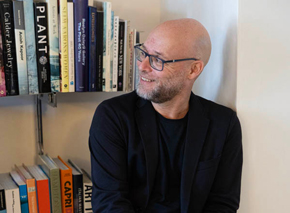Verdi’s Requiem: A concert review by Shirley Politzer
Verdi’s Requiem, his largest and most significant choral work, performed recently by the Sydney Philharmonia Festival Chorus and Orchestra, is a musical setting of the Catholic funeral mass for four soloists, a double choir and orchestra.
It is in seven sections, sung in Latin, written in memory of Alessandro Manzoni who was one of Verdi’s heroes. The 1st performance was in 1874, the 1st anniversary of Manzoni’s death.

Many at the time believed that Verdi’s theatrical and operatic style of writing did not suit a religious work. Still, audiences have proven that he has written it marvellously and successfully as they have been flocking to it ever since. Verdi’s wife believed that Verdi should be allowed to write in his own chosen style. In the Requiem, Verdi unifies the 90-minute work by the use of repetition-especially with the Dies irae which is repeated four times, and the use of fugues from the choir scattered through the work.
Soft caressing sounds of the choir with the muted strings using long notes opens this theatrical music for the dead- a mass for the repose of the souls of the deceased. It is all fairly gentle till the terrifying and instantly recognisable Dies irae explodes. The Dies Irae recalls a day when souls of the dead arise for external judgement. The Sydney Philharmonia Orchestra (SPO) is very much one of the backbones of this work. It is also given many beautiful solos or solo groupings. In Qui Mariam obsolvisti, the oboe beautifully depicts a pastoral scene with sheep, goats and shepherd’s pipe; The Dies Irae has the very exposed solo brass section playing in perfect harmony; and the piercing piccolo flies up and down the notes in the highest register with drums and timpani giving all they have together with the orchestra-all senses heightened in excitement, for the packed house audience.
We have the pleasure of being introduced to all the soloists near the start and hearing them as a quartet backed by the choir, for Kyrie Elieson. As the work progresses, the soloists sing in various combinations together.
Maija Kovalevska, a soprano from Latvia who most recently performed Mimi (La Boheme) in Sydney and Melbourne, was given the opportunity to show the versatility of her voice in Libera me (Deliver me) at the end of the Requiem. She could sing peacefully, low and loud as well as delicately in her upper range, all while keeping eye contact with the audience.
Deborah Humble, mezzo-soprano, sang with beautiful warm and pleasing expression-able to sing powerfully across her wide vocal range. Her rolled tongue technique made her syllables very crisp.
In the Agnus Dei (Lamb of G-d), Humble and Kovalevska are required to sing a single haunting melody 1 octave apart, a cappella(unaccompanied). This is quite unusual and difficult but was performed beautifully, later echoed by the choir in unison and backed only by flutes.
Diego Torre, tenor, was very comfortable using his operatic voice to sing the beautiful melodies Verdi presented. His voice is very expressive with a sound that had no trouble reaching all areas of the concert hall. Torre was born in Mexico City and has sung all around the world. He most recently performed as Pinkerton in Madama Butterfly and will be singing again soon with the SPC for Mahler’s 8th Symphony.
David Grecco has sung internationally and is also recognised all over the world for his expertise in interpreting Schubert Lieder and Bach. He is referred to in the program as both a bass and a baritone. Grecco is a solo recording artist, and amongst many credits to his name, he has a doctorate from Melbourne University. He sang well with gusto, as is required by Verdi, being very much in the moment of the music.
Supporting the wonderful soloists is the very capable Sydney Philharmonia Festival Chorus, which filled four boxes around the stage. They were able to use their voices successfully to create the mood required as well as sing in a fugal style or single-line melody. They were also a visual pleasure in how they sat and stood all together and held their folders-something I believe is as important as their singing.
Brett Weymark, artistic and music director of the Sydney Philharmonic Choirs and Orchestra, had full command of the 50 orchestra members, 330 odd choir surrounding him, and the four soloists, leaving nothing to chance. He looked dapper in his long black tails and deserves credit for a magnificent production that was enjoyed thoroughly by the audience.






